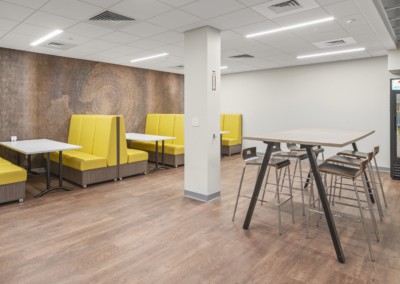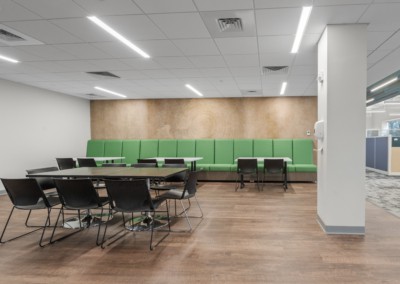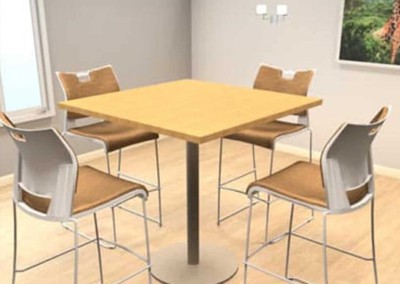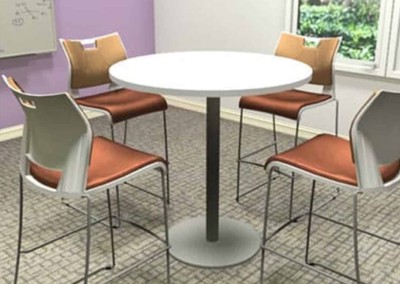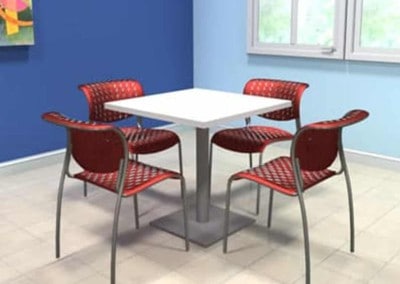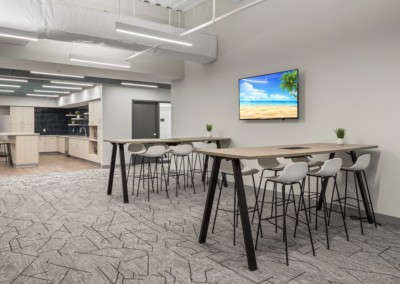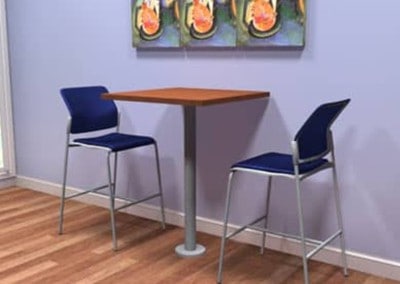Cafeteria Room Design & Office Furniture
How to Choose Tables and Chairs When You Are Designing or Updating a Lunchroom or Cafeteria
When you are designing and furnishing an office cafeteria, it is important to consider the needs of your team and the various purposes the room serves. How businesses and employees use cafeteria space has been evolving for a long while, but the recent “return to the office” after COVID and hybrid remote work schedules have fueled a more aggressive evolution. Today, cafeterias are relied upon to serve multiple purposes and to be an office attraction rather than just a place to eat lunch.
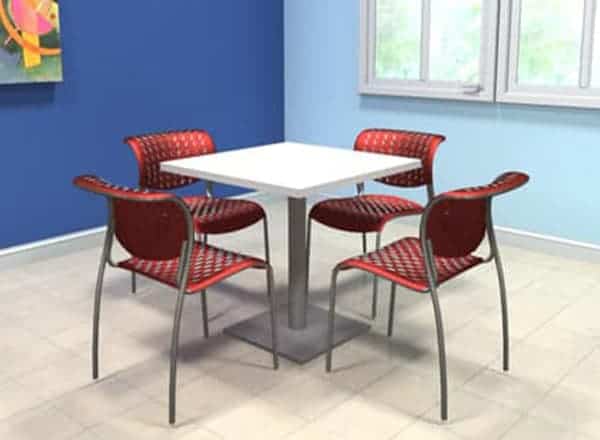
- Sale!
 Original price was: $ 594.00.$ 259.00Current price is: $ 259.00.
Original price was: $ 594.00.$ 259.00Current price is: $ 259.00. - Sale!
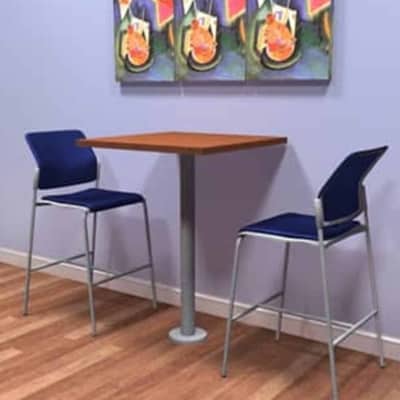 Original price was: $ 696.00.$ 389.00Current price is: $ 389.00.
Original price was: $ 696.00.$ 389.00Current price is: $ 389.00. - Sale!
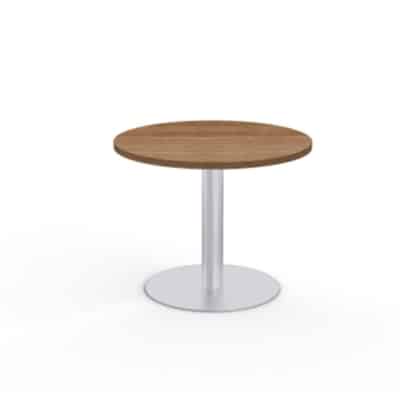 Original price was: $ 742.00.$ 395.00Current price is: $ 395.00.
Original price was: $ 742.00.$ 395.00Current price is: $ 395.00. - Sale!
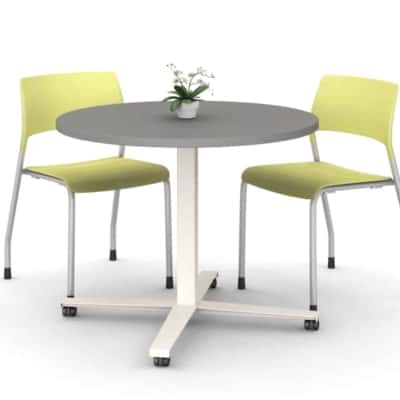 Original price was: $ 1,594.00.$ 495.00Current price is: $ 495.00.
Original price was: $ 1,594.00.$ 495.00Current price is: $ 495.00. - Sale!
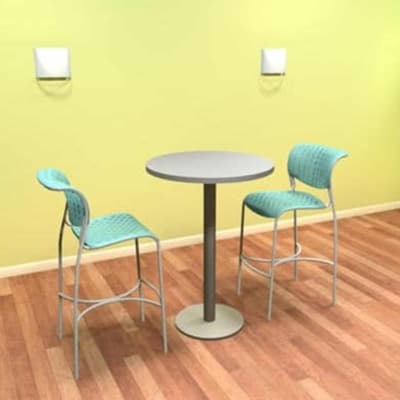 Original price was: $ 919.00.$ 515.00Current price is: $ 515.00.
Original price was: $ 919.00.$ 515.00Current price is: $ 515.00. - Sale!
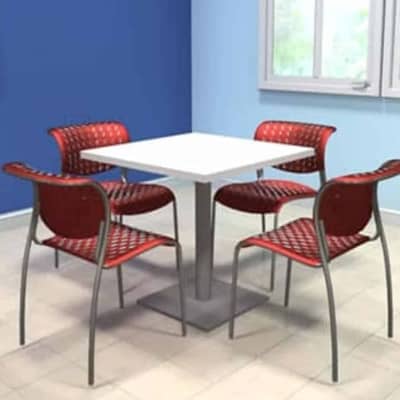 Original price was: $ 972.00.$ 545.00Current price is: $ 545.00.
Original price was: $ 972.00.$ 545.00Current price is: $ 545.00. - Sale!
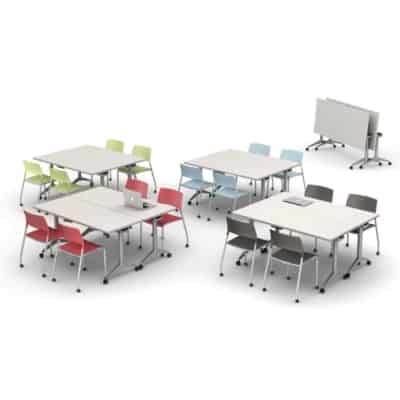 Original price was: $ 1,665.00.$ 725.00Current price is: $ 725.00.
Original price was: $ 1,665.00.$ 725.00Current price is: $ 725.00. - Sale!
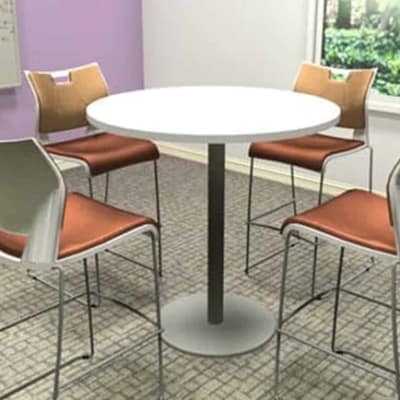 Original price was: $ 1,449.00.$ 775.00Current price is: $ 775.00.
Original price was: $ 1,449.00.$ 775.00Current price is: $ 775.00. - Sale!
 Original price was: $ 1,389.00.$ 779.00Current price is: $ 779.00.
Original price was: $ 1,389.00.$ 779.00Current price is: $ 779.00. - Sale!
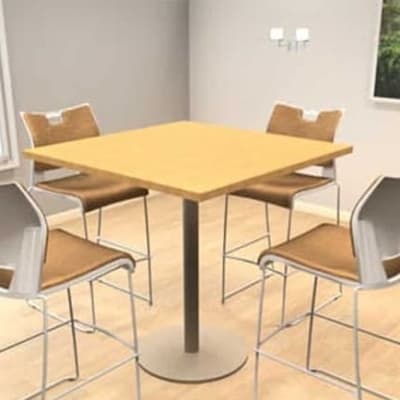 Original price was: $ 1,492.00.$ 795.00Current price is: $ 795.00.
Original price was: $ 1,492.00.$ 795.00Current price is: $ 795.00. - Sale!
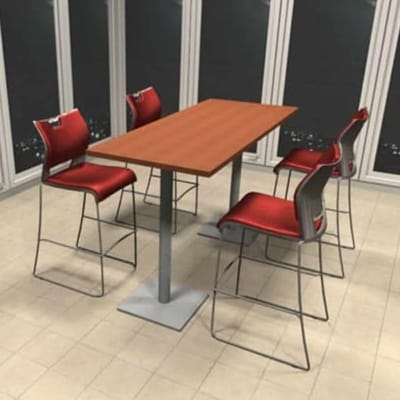 Original price was: $ 2,197.00.$ 1,252.00Current price is: $ 1,252.00.
Original price was: $ 2,197.00.$ 1,252.00Current price is: $ 1,252.00.
Understanding the Office Cafeteria
The Purpose of the Cafeteria
The obvious purpose of the office cafeteria is to provide space for employees to eat lunch away from their workstations. Limited to that purpose, designing and furnishing a lunchroom would be as simple as filling it with basic tables and chairs.
The more complicated reality is that the cafeteria serves other purposes. For some businesses, the cafeteria may serve multiple purposes and act as the centerpiece of the entire office. Companies offering hybrid remote work schedules may have already downsized, or might be looking to downsize, office space based on fewer employees coming into the office. In this scenario, it is vital to utilize every square foot of office space as flexibly as possible. The cafeteria may transform into a place to collaborate, conduct formal meetings, take a quick mental break and relax, or field personal phone calls.
“Town Halls”
Cafeterias often accommodate large all-employee meetings, also known as “Town Halls.” Many offices do not have any other space large enough to host all employees for a meeting and rely on the cafeteria to be that place.

Cafeterias Are Getting Bigger
Businesses are more focused on making the office inviting, comfortable, flexible, collaborative, and sociable to entice employees back to the office. This strategy often results in fewer dedicated workstations for each and every employee. With this shift, the percentage of total office space used for a cafeteria is growing relative to other parts of the “typical” office. The exact size that the cafeteria needs to be is dependent on the size of the business, the number of employees, and other factors, including if the space is shared between multiple businesses, if there is a kitchen that serves food, the number of employees who typically use the space, etc.
Hybrid Office Considerations
The requirements of the hybrid office are changing many aspects of how the office is used and is, therefore, changing aspects of layout, design, and furniture choice. Businesses that offer hybrid remote work schedules have fewer employees in the office each day. These businesses have been moving away from dedicated workstations for each employee and moving toward design and furniture that are more flexible. Businesses are also tasked with making the office a more desirable destination, hoping to increase the volume of employees who choose to come in and make use of the space. Here are some examples of how the evolving needs of office space are impacting the lunchroom:
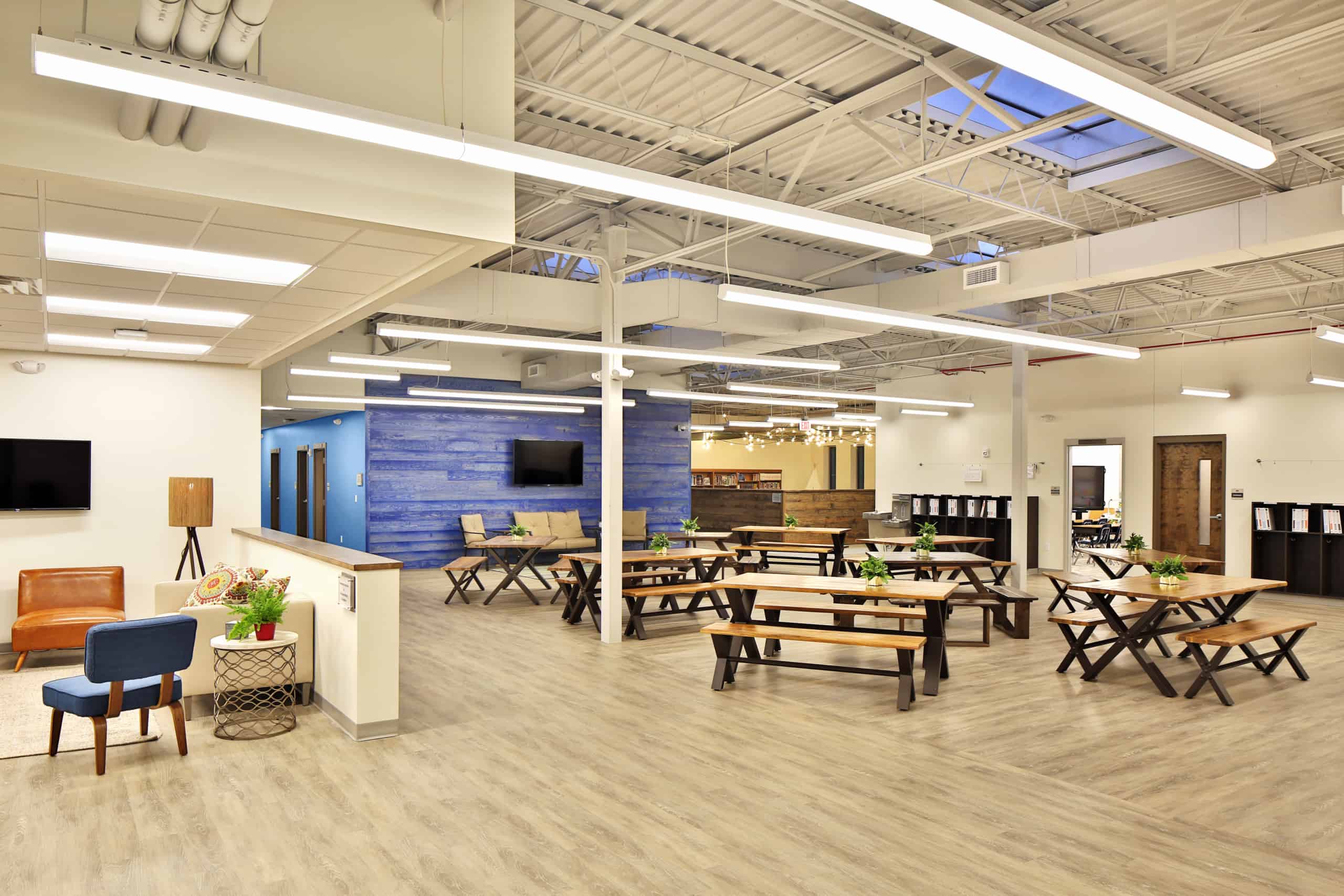
Multi-purpose
The need for every office zone to be flexible and multi-purpose is an increasingly important consideration. The cafeteria is a prime example. With office space at a premium, it does not make sense for a cafeteria to be used only for breakfast, coffee breaks, and lunch. With a more inviting design and more comfortable furniture, the cafeteria becomes a more desirable location for a variety of purposes: meetings, collaborations, change-of-pace workspace, coworker socialization, and many more. For many modern tech companies, the office is designed with the cafeteria as a hub of the entire building.
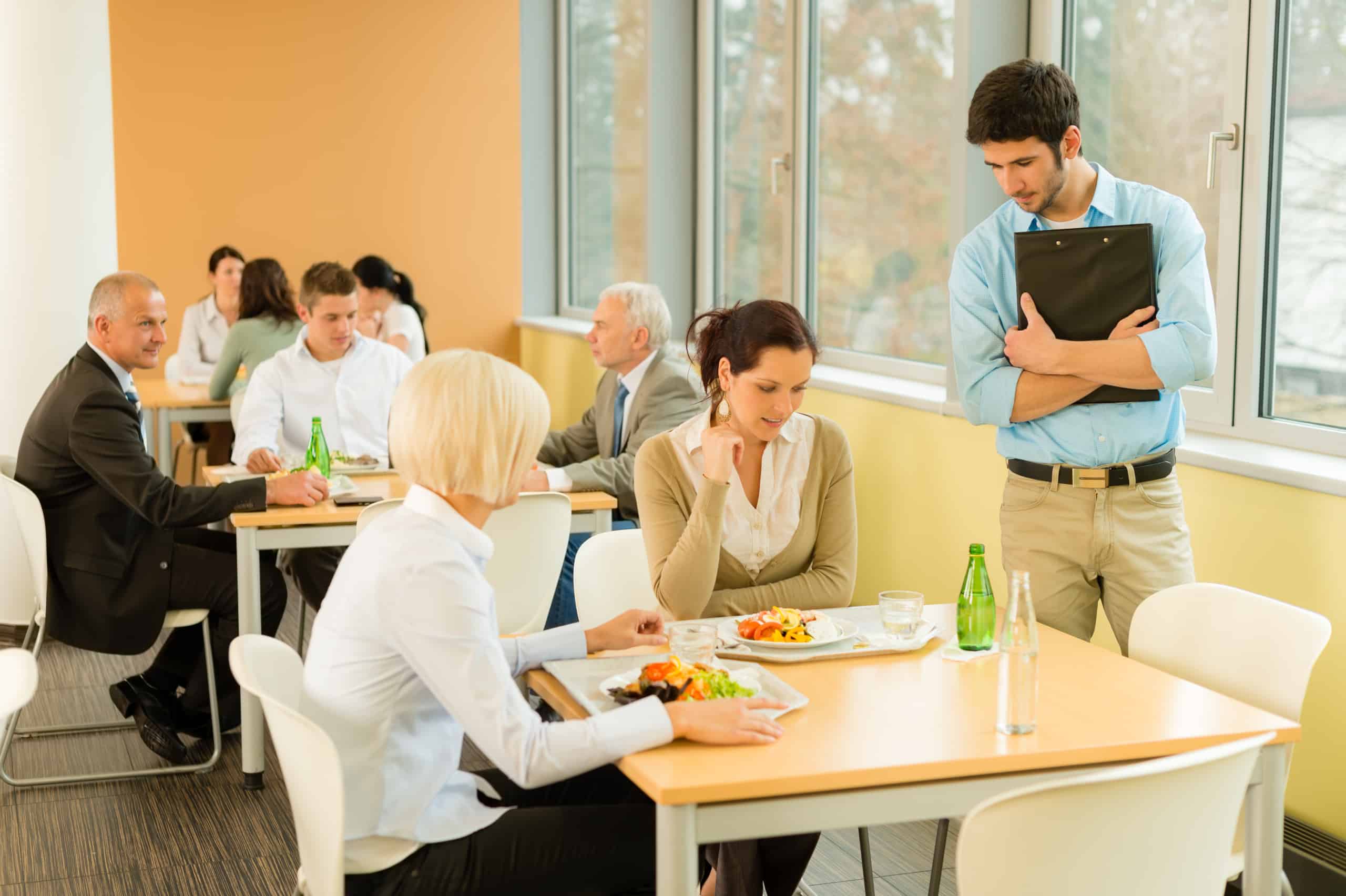
Alternative Workspaces
Whether or not an employee has a dedicated workstation, sometimes it is nice to switch up the space. If the cafeteria is a good place for meetings, then it could also be an appealing individual workspace. The cafeteria may be less distracting or more comfortable or a novel space to get creative juices flowing. Of course, if there are not enough traditional workspaces for everyone in the office that day, the cafeteria space could be utilized.
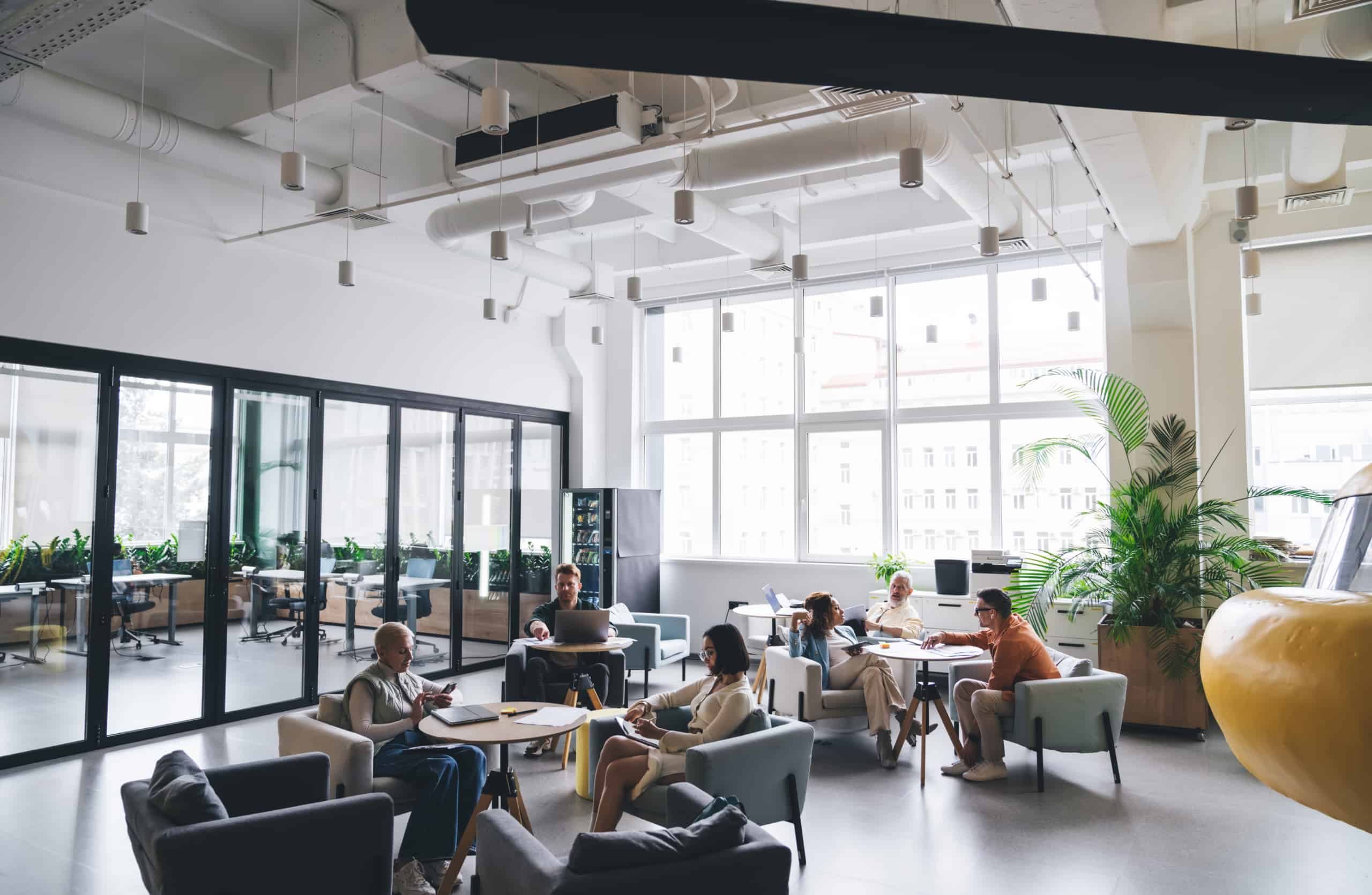
Meeting and Collaboration
If the cafeteria is to meet the need for collaborative space, its layout, tables, and chairs should be selected carefully. People who are collaborating probably do not want to sit on traditional hard plastic cafeteria seats for a prolonged period of time. Expanding the purpose and use of cafeteria space requires changes to make the room more inviting, by supplementing that furniture with lounge-like seating that is more inviting for meetings and socializing, for example. Another option could be to offer more isolated pockets of seating that allow for more private meeting spaces. High-tops may work well, as they give employees the options of sitting or standing.

Resimercial & Lounge Seating
To make the office more inviting, many businesses are turning to designs and furniture that resemble a lounge or living room, a style also known as “resimercial.” Consider adding some booths to the cafeteria that would be both comfortable and conducive to small meetings. Creating a fancy cafe-style area is another way to give the cafeteria an appealing vibe. This approach offers added comfort in a cool and attractive atmosphere.
Lunchroom Design and Layout
The design and layout of a cafeteria should consider a multitude of variables. When the cafeteria is used only for lunch and coffee breaks, aesthetics might be a bigger focal point of the design. When the space serves multiple purposes, functionality should be by far the most significant driving factor behind the cafeteria design. In the design process, it can be helpful to map a cafeteria’s primary uses into different zones in order to account for those important purposes.
The zones could be a great opportunity to showcase some related images, CAD renderings, etc. as a visual aid. We could also offer a gallery of images/designs in this section, outsize of zones.
Dining Zone: For some offices, especially smaller businesses, the dining zone may be the entire lunchroom. The dining zone is the primary zone for almost every office cafeteria.
Meeting Zone: Space where employees can eat, but that also promotes collaboration among coworkers, both planned and spontaneous, can have a meeting zone.
Food-Service Zone: If the cafeteria has a kitchen or offers catered food as a service, you will need to consider how the layout is built around the food-service zone. Typically, the dining zone is placed close to the food-service zone.
Socialization Zone: The option to grab a snack, lunch, or beverages is a great way to attract workers to the cafeteria, naturally increasing opportunities for random encounters and socialization. Most businesses highly value this type of interaction. Better social connections tend to lead to better collaboration and workplace satisfaction.
Privacy Zone: If the space allows, some slightly more isolated zones can be more private areas for people to eat or meet (or do both, in a productive lunch meeting).
Features and Aesthetics
Outside of use and functionality, the look and feel of the cafeteria should not be overlooked. Here are some simple suggestions for making the lunchroom look great and give off inviting vibes:
- Natural elements like plants and plenty of natural sunlight
- Food and drinks are always a big draw, especially healthy food and caffeinated beverages
- TVs or music for some basic entertainment
- Strong Wi-Fi throughout the room is a must
- Shared appliances such as microwaves and toaster devices to allow employees to heat up food and fridge space for food storage for those who bring a lunch

Cafeteria Furniture
Cafeteria Tables
Office lunchroom tables come in various styles, shapes, and sizes to accommodate different needs and preferences. One thing common to all table types is the need for them to be durable and easily cleaned. Hygiene is important in a space where people are dining, and spills and messes are unavoidable. Here are some common office cafeteria table options:
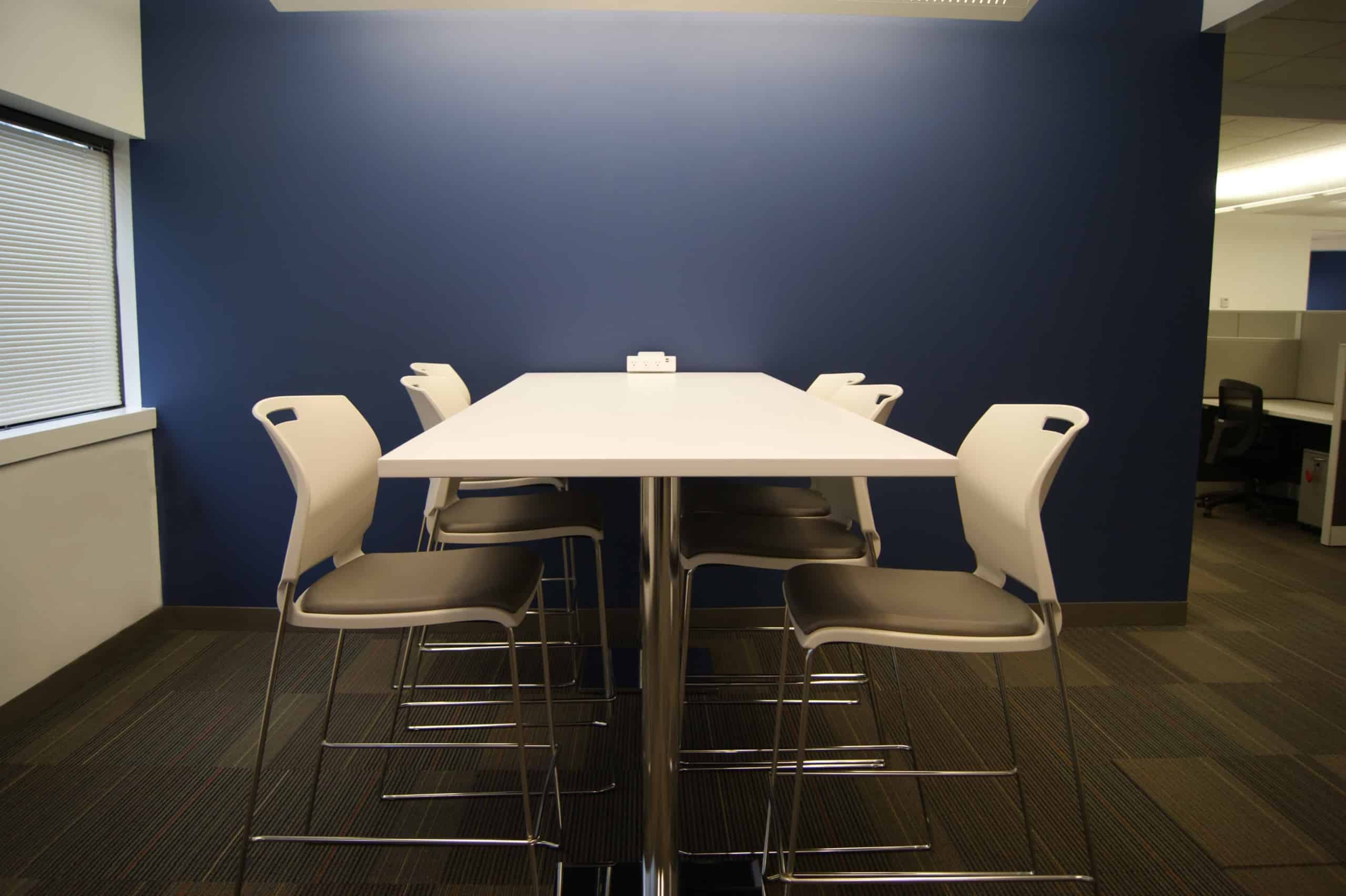
Rectangular Tables:
These are the most common cafeteria tables; they are often used for large-group dining. Rectangular tables can be quite long, accommodating several people on each side.

Square Tables:
Square tables are versatile and can be used for both small and large groups. They encourage more intimate conversations and are ideal for smaller cafeteria spaces.

Round Tables:
Round tables provide a communal dining experience and encourage face-to-face interactions. They are often used in more relaxed cafeteria settings.
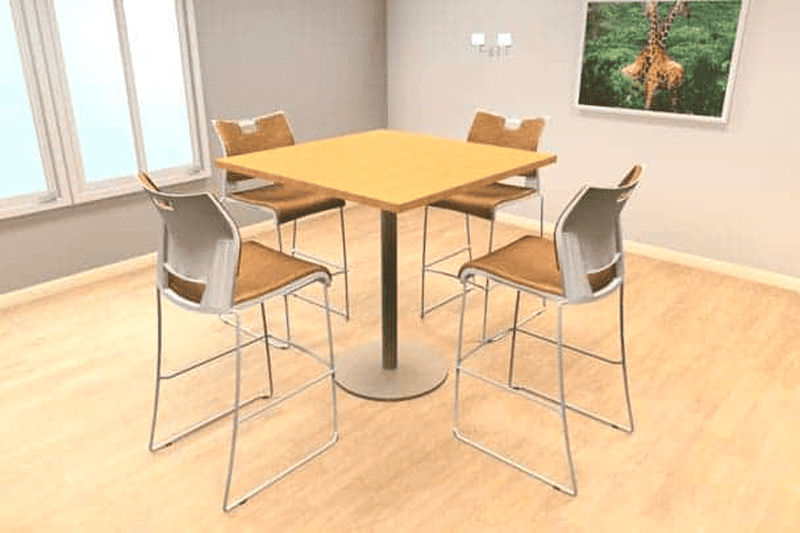
High-Top Tables:
High-top or bar-height tables are typically used with barstools and are great for a casual and social dining experience. They are also space-efficient.
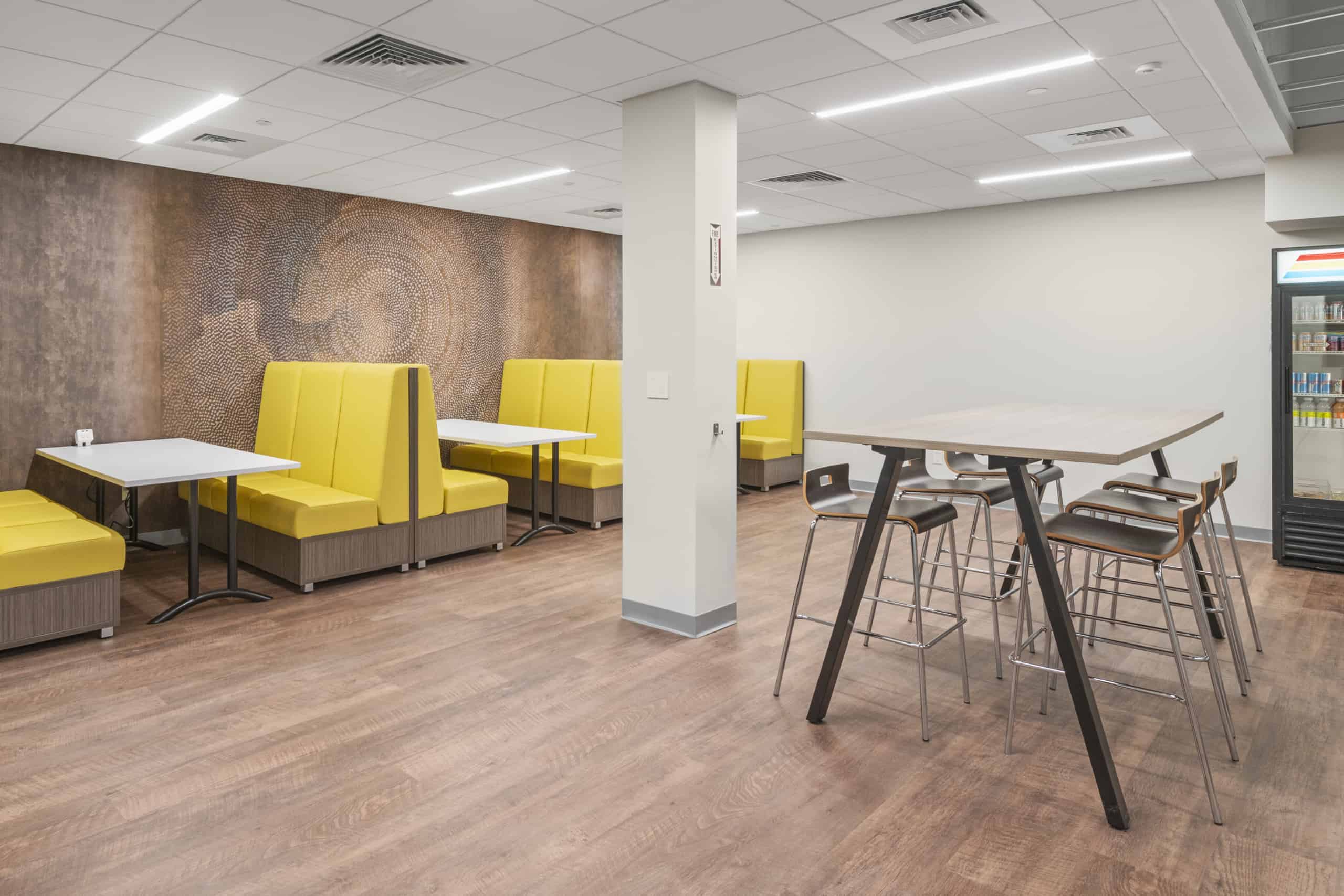
Booth Tables:
Booth tables are often paired with booth seating to create semi-private dining areas. Booth tables are usually rectangular or square and provide a cozier atmosphere.
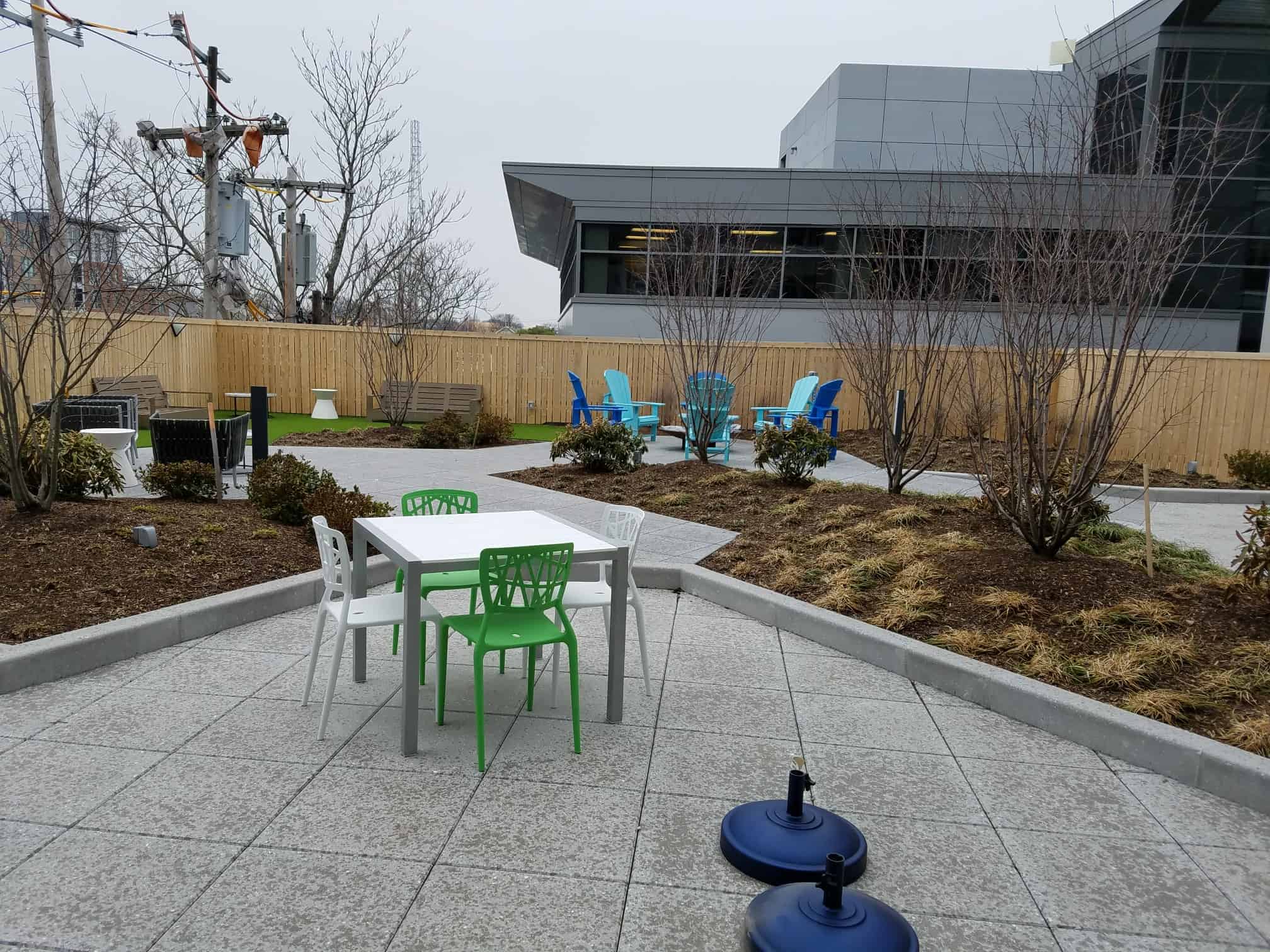
Outdoor Tables:
For cafeterias with outdoor spaces, choose outdoor tables made from weather-resistant materials, such as metal or plastic.
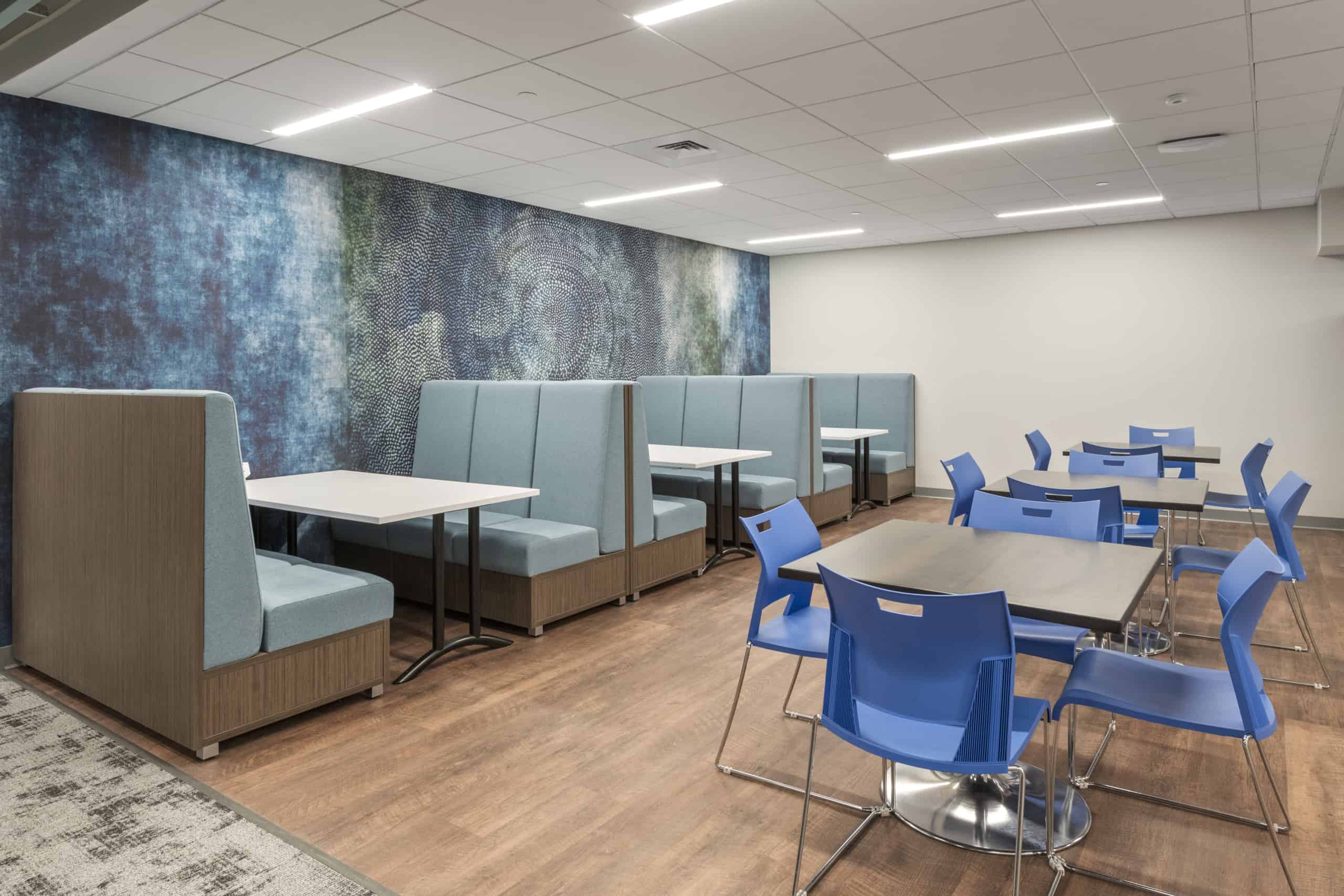
Cafeteria Benches:
Instead of separate chairs, some cafeteria tables have attached benches on one or both sides. Benches can be a space-saving option and they encourage a communal dining experience.
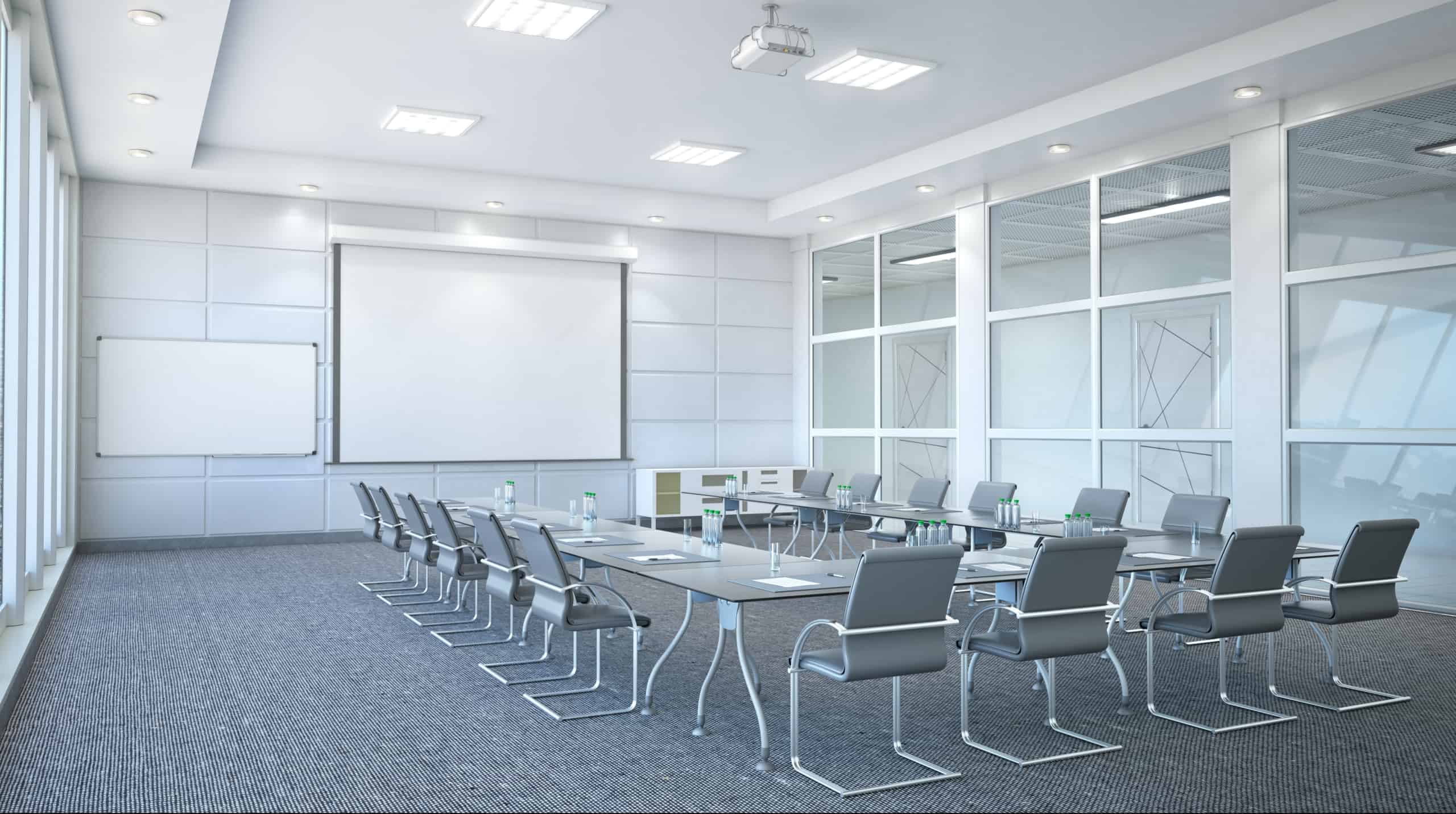
Modular Tables:
Modular tables consist of individual units that can be rearranged to create different table configurations. They offer flexibility in adapting to various seating needs.

Standing Tables:
Some cafeterias provide standing tables, which are ideal for employees who prefer to eat while they are standing or work while they are on their feet. They encourage a more active dining experience.
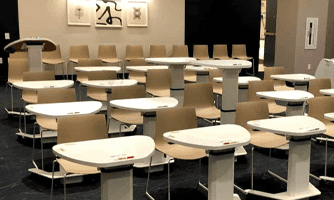
Adjustable-Height Tables:
These tables can be raised or lowered to accommodate both seated and standing diners. They provide flexibility.
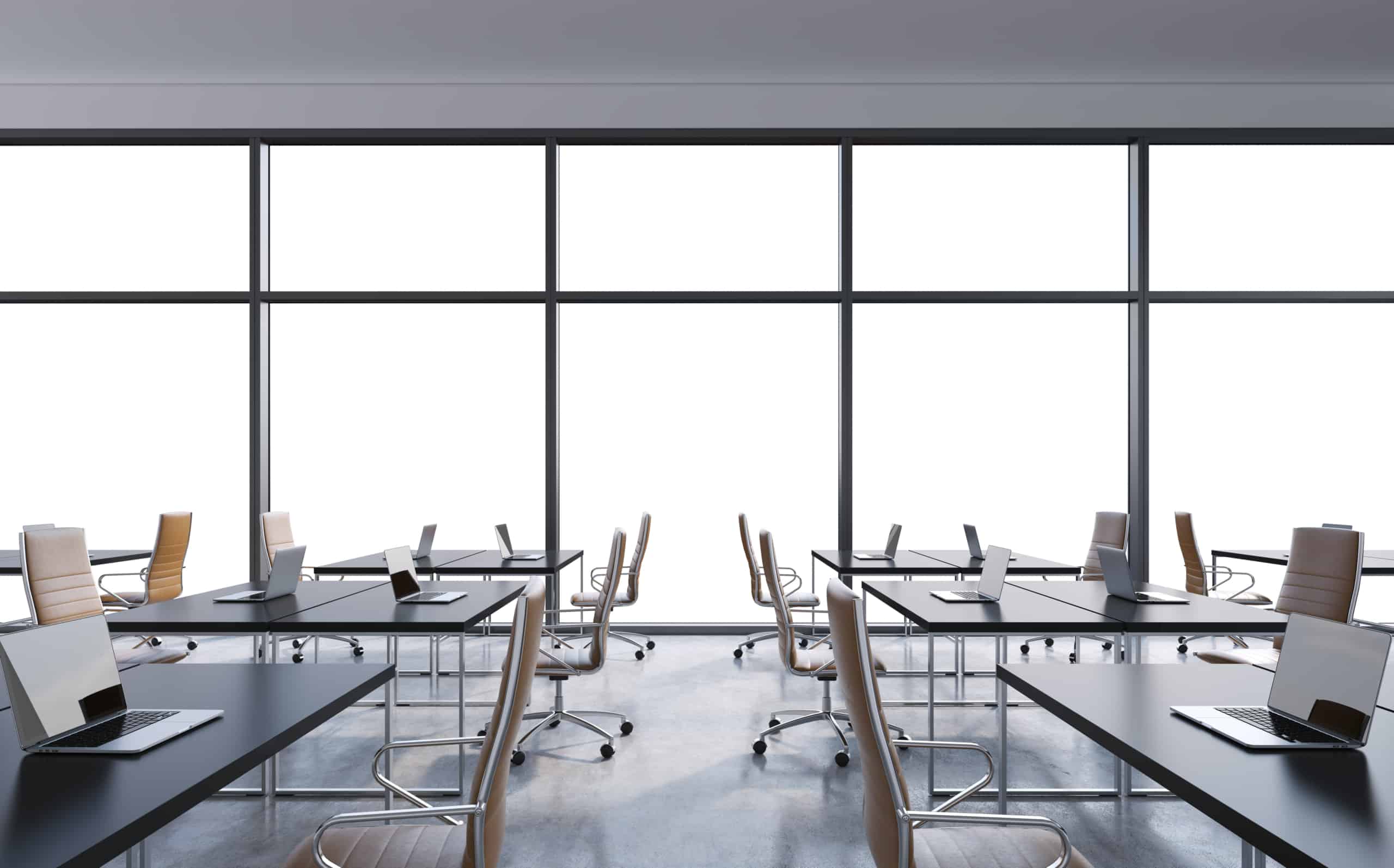
Collaborative Tables:
These tables may have built-in power outlets, USB ports, or communication tools to support impromptu meetings and collaborative work during meal breaks.
The choice of lunchroom tables should take into consideration the space available, the cafeteria’s overall design, and the needs and preferences of the employees who will be using the furniture. Different areas within the cafeteria can have table options that cater to different dining experiences and group sizes.
Cafeteria Seating
Cafeteria seats come in various styles and materials to accommodate a range of different preferences and needs. Like tables, seating in the lunchroom should be easy to clean and able withstand a lot of use and wear-and-tear. Visit our cafeteria seating page to learn more and view a selection of products.

